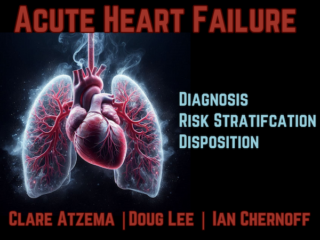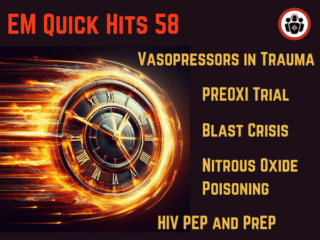EM Quick Hits 61 TEE in Cardiac Arrest, Nebulized Ketamine, Cellulitis Update, SQ Insulin for DKA, Medicolegal DDx Documentation Tips
On this month's EM Quick Hits podcast: Ross Prager on TEE in cardiac arrest, Justin Morgenstern on nebulized ketamine for analgesia in the ED, Hans Rosenberg & Krishin Yadav on standardizing cellulitis management, Mathew McArther on latest studies on subcutaneous insulin protocols in DKA, Jennifer C. Tang on documenting differential diagnoses medicolegal tips...










